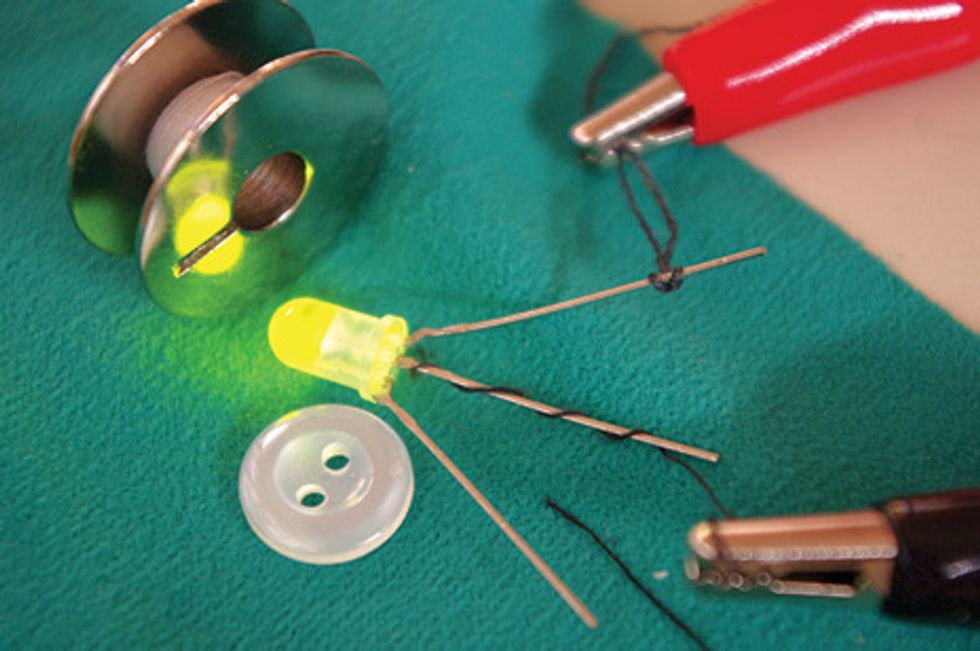A group of researchers in the United States, Italy, and France have invented transistors made from cotton fibers. They envision such devices being woven into clothing capable of measuring pollutants, T-shirts that display information, and carpets that sense how many people are crossing them. "We want to create a seamless interface between electronics and textiles," says Juan Hinestroza, director of the Textiles Nanotechnology Laboratory at Cornell University, in Ithaca, N.Y.
Instead of attaching sensors or processors to clothing after the garments are fully formed, it would be more effective to incorporate such devices directly into the fabrics, says Annalisa Bonfiglio, an EE professor at the University of Cagliari, in Italy, whose student Giorgio Mattana worked on the cotton in Hinestroza's lab.
The cellulose that makes up cotton is naturally insulating, so to make a fiber conductive, the team coated each strand with gold nanoparticles. They then added a thin layer of a conductive polymer known as PEDOT. The fibers proved to be about a thousand times as conductive as plain cotton, while their mechanical properties remained almost unchanged. They were slightly stiffer but more elastic than untreated fibers, Bonfiglio says. The team demonstrated the treated cotton's conductivity by making a simple circuit, knotting one end to a battery and the other to an LED.
To show the versatility of the process, the researchers created two types of devices: an organic electrochemical transistor and an organic field-effect transistor. For the electrochemical version, conductive cotton fibers were used as source, drain, and gate electrodes. To complete the transistor, the team needed to create a semiconductor. They achieved this by doping the conductive polymer with poly(styrenesulfonate), a polymer commonly used to make proton exchange membranes in fuel cells. After a soak in the second polymer, the cotton fiber was coated with ethylene glycol to make it waterproof.
The field-effect transistor also begins with a conductive cotton strand dipped in the semiconducting polymer, which in this case acts as the gate electrode. But the fiber is then given a thin coat of polymer film that acts as a dielectric, followed by a coat of pentacene, another semiconductor polymer film.
University
Treating the cotton with these various substances is not as complicated as it sounds; Bonfiglio says it's comparable to dyeing the material. Still, don't expect to see underpants doubling as MP3 players anytime soon. The speed of electrons in these transistors is relatively low compared to that of silicon circuits, says Bonfiglio.
"For the moment, I think the most realistic application is in the sensor area," she says. For instance, firefighters' uniforms might be able to detect dangerous chemicals, while security personnel could be alerted to airborne signatures of explosives or drugs. Garments might also monitor heart rate or perspiration. Inside homes and businesses, fabrics—in the form of carpeting, wall coverings, and upholstery—could keep track of humidity levels and allergens.
"If you think about how many fibers you have in your T-shirt, and how many interconnections you have between the weft and the warp of the fabric, you could get pretty decent computing power," says Hinestroza.


